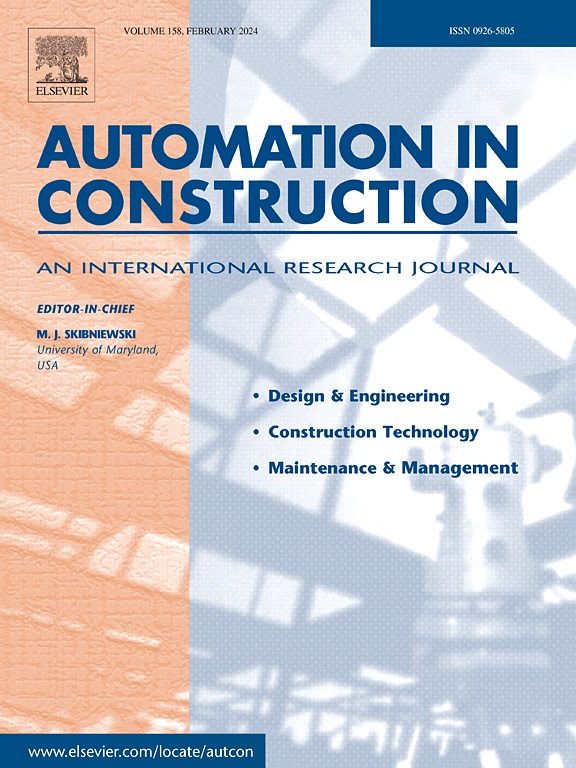监测建筑工地危险区域进入的数字技术
IF 11.5
1区 工程技术
Q1 CONSTRUCTION & BUILDING TECHNOLOGY
引用次数: 0
摘要
建筑工地是最危险的职业环境之一,因此进入危险区域的有效监测系统对于防止死亡和严重伤害至关重要。尽管对先进监测技术的研究越来越多,但系统审查仍然是必要的。利用PRISMA方法,本文分析了81篇同行评议的文章,将危险区域进入情景分为三种不同的模式:人员进入静态危险,与动态危险相互作用,以及重叠的多设备操作。研究结果强调了突出的数字技术,其中计算机视觉(CV)、物联网(IoT)和集成解决方案分别占被审查文章的37%、42%和21%。此外,该分析还指出了一些挑战,包括当前CV和物联网技术的局限性,以及在动态施工条件下部署这些解决方案的困难。该研究概述了提高系统智能、完善部署策略和更好地整合安全培训的机会,指导了建筑安全监测的未来发展,特别是在危险区域进入方面。本文章由计算机程序翻译,如有差异,请以英文原文为准。
Digital technologies for monitoring hazardous area entry in construction sites
Construction sites are among the most hazardous occupational environments, making effective monitoring systems for hazardous area entry essential to prevent fatalities and severe injuries. Despite a growing body of research on advanced monitoring technologies, a systematic review remains necessary. Utilizing the PRISMA methodology, this paper analyzes 81 peer-reviewed articles, categorizing hazardous area entry scenarios into three distinct patterns: personnel entry into static hazards, interactions with dynamic hazards, and overlapping multi-equipment operations. The findings highlight prominent digital technologies, with computer vision (CV), Internet of Things (IoT), and integrated solutions representing 37 %, 42 %, and 21 % of the reviewed articles, respectively. Additionally, the analysis identifies several challenges, including limitations of current CV and IoT technologies and difficulties in deploying these solutions under dynamic construction conditions. The study outlines opportunities to enhance system intelligence, refine deployment strategies, and better integrate safety training, guiding future advancements in construction safety monitoring, particularly regarding hazardous area entry.
求助全文
通过发布文献求助,成功后即可免费获取论文全文。
去求助
来源期刊

Automation in Construction
工程技术-工程:土木
CiteScore
19.20
自引率
16.50%
发文量
563
审稿时长
8.5 months
期刊介绍:
Automation in Construction is an international journal that focuses on publishing original research papers related to the use of Information Technologies in various aspects of the construction industry. The journal covers topics such as design, engineering, construction technologies, and the maintenance and management of constructed facilities.
The scope of Automation in Construction is extensive and covers all stages of the construction life cycle. This includes initial planning and design, construction of the facility, operation and maintenance, as well as the eventual dismantling and recycling of buildings and engineering structures.
 求助内容:
求助内容: 应助结果提醒方式:
应助结果提醒方式:


